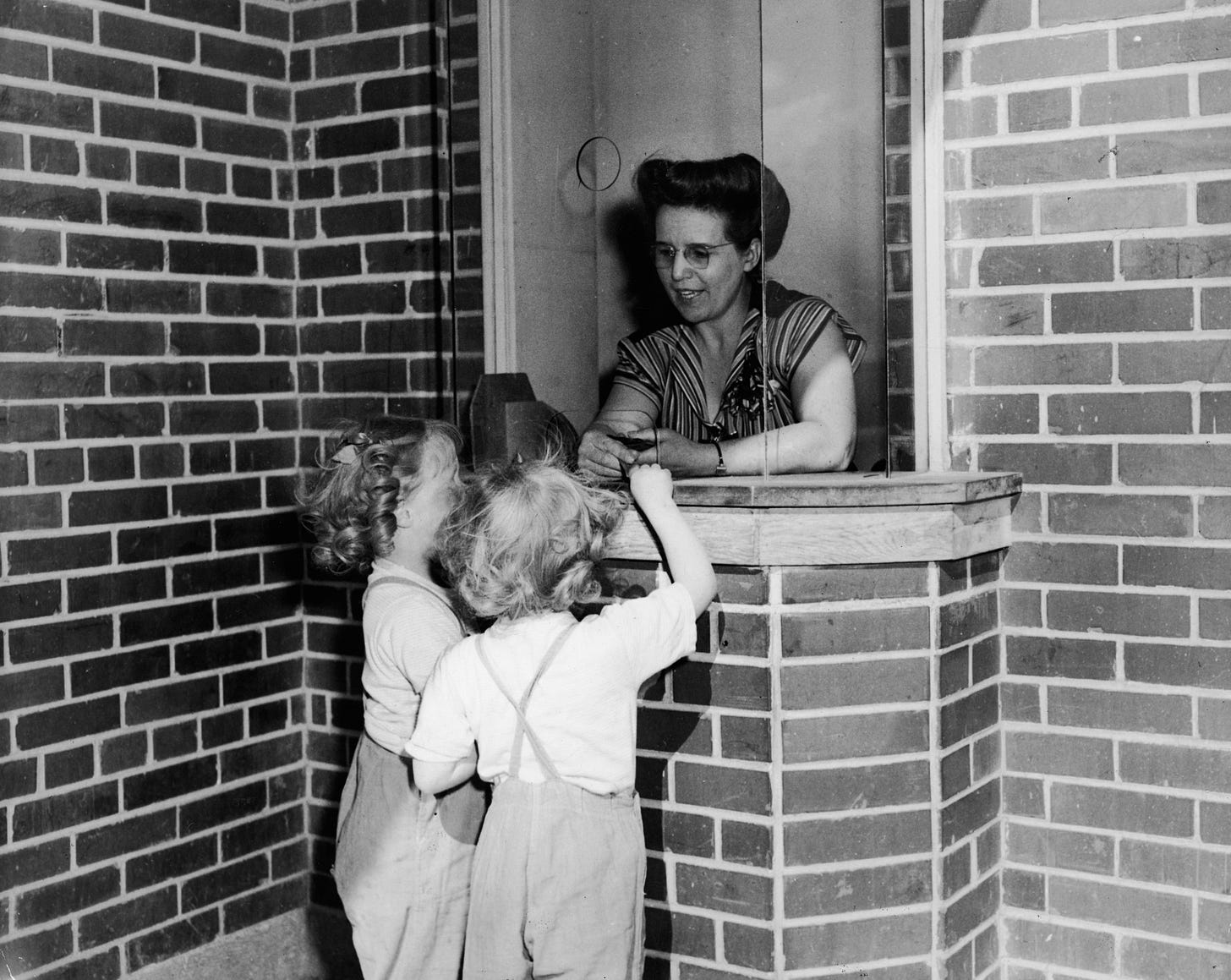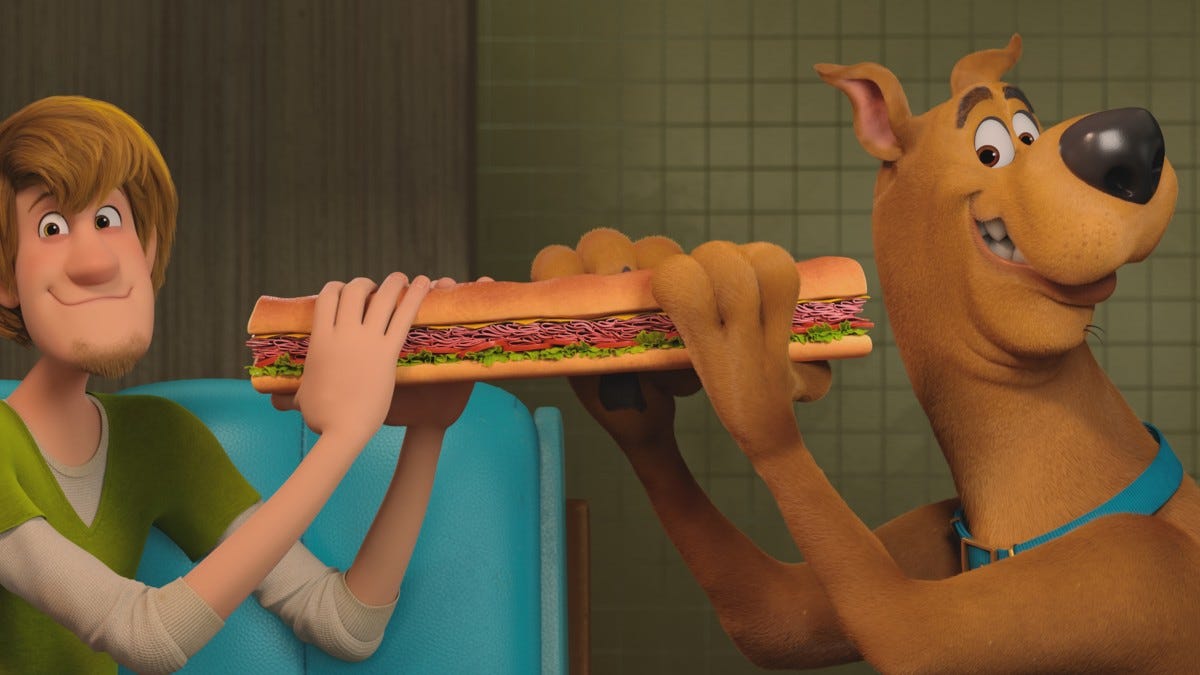Dialogue: What Are Movies Worth?
The pandemic has accelerated dramatic changes in how people watch movies. How much is it changing their value, too?
Dialogue is a recurring feature where we discuss the issues of the day and invite you to continue the conversation.
Scott: When the pandemic shut down \theaters for the better part of a year, studios and independents scrambled to figure out how to get their movies to the public. Some movies in theaters were pulled from theaters or had their release dates postponed, like Kelly Reichardt’s First Cow (the last film I saw in a theater, incidentally), while others were shuffled to some form of digital viewing for audiences stuck at home. There were obvious practical issues at play here—these films needed to make some return on investment—but with this crisis also came a great deal of opportunity to innovate and perhaps to plan for a transformation in moviegoing habits. We’ve all been coming to terms with those changes ever since.
Was Eliza Hittman’s Never Rarely Sometimes Always, a low-key drama about a rural Pennsylvania teenager’s odyssey to get an abortion, well-served by the same $20 rental charge that Universal/Focus attached to big genre films like The Invisible Man and The Hunt? How does it feel to pay $30 on Disney + for what are essentially visitation rights to films like Cruella and Black Widow, which will all be on the service for free after a few months? And why are Disney movies like the live-action Mulan and Raya and the Last Dragon “Premier Access” while Pixar films like Soul and Luca are free to subscribers? I’m left wondering what is a good value to consumers and what any of this might suggest about the future of movies.

I suspect we will address those changes from any number of angles on The Reveal, as we’re hugely invested in what the moviegoing experience will look like in the near and distant future. To borrow a hackneyed phrase, we live in uncertain times, and I feel inclined to approach them with the humility of acknowledging that I don’t know precisely where things are going. One of the irritants of the past year has been witnessing writers making know-it-all pronouncements about the death of the movies, or, say, calculating the disappointing weekend box office for a film like The Suicide Squad as if divorced from the context of COVID variants and its availability on HBO Max. You can’t discuss any of this without a pocketful of asterisks.
The Reveal is a reader-supported newsletter dedicated to bringing you great essays, reviews and conversation about movies (and a little TV). While both free and paid subscriptions are available, please consider a paid subscription to support our long-term sustainability.
The main question that’s haunted me from the beginning of the pandemic is: What are movies worth now? Independent distributors and theaters have been better prepared to answer than major studios, because they’re been wrestling with it for far longer. Their experience is instructive. Day-and-date releases—movies released in theaters and on demand the same day—are over 15 years old now, a digital experiment from the moment Magnolia Pictures, led by Mark Cuban and Todd Wagner, bought the Landmark Theatres arthouse chain. They saw a future where traditional theatrical and video release windows would collapse and viewers would have the choice to watch movies in theaters or at home—and a future where distributors could save money on promotion. Steven Soderbergh, always eager to be the canary in the digital coal mine, made Bubble and The Girlfriend Experience for Magnolia, in the faith that this new disruption might be good for everyone. But to my eyes, something else happened. Support eroded for independent theaters, which now struggle to coax people from their living rooms. The numbers have borne that out.
The pandemic brought an ironic twist to the story. Many independent distributors, led by Kino Lorber, tried “virtual cinema” in an effort to support shuttered theaters by mimicking the money-sharing that traditionally occurs when a film opens in theaters. The virtual cinema model: You pay $12 for great films like Bacarau or Fourteen, and you have the option to direct some of the proceeds to your favorite local theater. But studios, in the midst of a brutal and expensive streaming war, seized the opportunity to weaken the National Organization of Theater Owners (which weirdly acronyms as NATO), which had previously made it impossible to shift away from tradition. (When Sony tried something like this with 2014’s The Interview, in the wake of an embarrassing North Korean hack on its servers, NATO responded as kindly to the studio as Kim Jong-un.)
But now, it’s an absolute free-for-all. Since Wonder Woman 1984, Warner Brothers has been putting all of its movies in theaters and on HBO Max simultaneously; Disney is offering some of its bigger releases at $30 “Premier Access” for Disney + subscribers; and Paramount + is luring viewers to its service by narrowing the window for a hit like A Quiet Place Part II or straight-up dumping the Mark Wahlberg stinker Infinite on it without any theatrical run at all. There are so many unique examples of pricing and strategy that I constantly circle back to that essential question: what movies are worth, to distributors and to consumers, right now?
Keith: I’m a bit breathless trying to figure out where to begin responding to all of the above. I think you’re right, however, to point out that our relationship to what we see in theaters has changed profoundly, not just since last March but over a couple of decades. As someone who writes about movies professionally. I know I’m not exactly Joe Average here, but I keep thinking about how in 2003 my wife and I (and I think you and your future-wife?) spent an evening going to see the movie Spellbound on the big screen. Not the Hitchcock Spellbound, but the well-received documentary on spelling bees.
Something changed as day-and-date theatrical and VOD releases became more common in the ’00s and ’10s, and the window between theatrical and VOD premieres narrowed, and our TVs became bigger and better. We began to sort movies into those we had to see in the theater and those we could happily watch at home. A lot has happened in my life since then that’s had an impact on my moviegoing habits, most notably parenthood. But even pre-pandemic, the odds of me going to a theater to see something like Spellbound, as winning as that film is, would be pretty long. But watching it at home? Sure. Sounds like a fine evening. But, like many who don’t haunt art houses as often as they used to (or would like), if I’m going to see something on the big screen, I want something big. And by big, I don’t necessarily mean filled with spectacle. Theaters focus the concentration in ways that are difficult to achieve at home. I want something big in the broader sense of the word.
I’m not proud of this. I acknowledge this makes me part of the problem. Ever since the first movie aired on television, I’m sure audiences have had a “I’ll catch it later” contingent that only grew and evolved in the video store era and beyond. But “I’ll catch it later” has become “I’ll catch it now.” And once we factor in competition from TV, video games, and other entertainment, and acknowledge that there always seems to be more movies than ever vying for our attention, that too easily becomes “I’ll catch it never.”
The pandemic has only exacerbated this, and it has me a bit worried. It’s not just little movies falling into the “I’ll watch it at home” bucket. How do you keep up going to the multiplex once you’ve seen Godzilla vs. Kong at home on opening night? That said, I feel like the pandemic has also gotten some of us (e.g. me) into the habit of paying more than we used to for movies. After paying $19.99, I now own a digital copy of the 2020 release Scoob! Why? Because during lockdown I wanted the best simulation of a family movie outing I could create at home, and my kid wanted to see Scoob! (It wasn’t great, but I can hand this film down from one generation to another until my descendants forget my Vudu password.)
Is this the future? I hope not. I love movie theaters, and 2020 left me lamenting every one of those earlier evenings when I could have gone to a movie but didn’t. And while I used to think we’d get a clearer picture of what the future of moviegoing looked like on the other side of the pandemic, I don’t know when or where that other side will be. Post-vaccine? We’re there, but the delta variant and breakthrough infections has me wanting to avoid crowded screenings. I haven’t brought my too-young-to-be-vaccinated kid back to the movies yet.
I think I’m answering your questions with my own puzzled question marks. Apologies for that. But my short answer is that we’re in a state of flux and the variables seem to shift from week to week. Do you have any sense of when it might settle down?
Scott: Absolutely no sense at all, Keith. After hopeful re-openings post-vaccine, it’s looking again like movie theaters are sputtering and studios are bumping major titles, now into 2022, which creates a vicious cycle that’s feeling like deja vu.
To get back to this question of value, though, I think we’re far from stabilizing to a point where moviegoers can anticipate what we should expect to pay for a given experience. We’re used to a system where the cost of going to theaters or renting a movie falls within a predictable range—if you’re in Chicago, as we are, maybe $12 for a ticket and $4 for a digital rental—and we’re seeing nothing like that emerge yet.Some of that has to do with distributors, like the rest of us, trying to adjust to a rapidly changing market and settling on the price points that will net them the most money. When Never Rarely Sometimes Always popped up for a $20 rental less than a month into the shutdown, my instinct told me that price would do the film a disservice, even though its true worth as an artistic achievement far exceeded other Universal films that seemed fair at the same cost.
Not only are the costs up in the air, but the motive behind those costs isn’t always the same. Warner Brothers seems fully committed to weakening its theatrical take —lotta empty seats at those Reminiscence screenings—because they want those monthly subscriptions to HBO Max. Ditto Paramount +, which is heaping its most embarrassing misfires to its “mountain of entertainment.” Over at Disney +, the pricing of Pixar animated movies like Soul (free with subscription) and a Disney animated movie like Raya and the Last Dragon ($30 with subscription) feels like a corporate civil war being played out in front of us. How must Pixar, the most celebrated brand in animation, feel about being that undervalued? And, more pertinently to us, the non-shareholders who just want to watch movies, what are these movies worth?
This feels like the beginning of a long and ongoing conversation, so I’ll end my say here. Any final thoughts?
Keith: We’re at a turning point, and I don’t know which way we’re going to turn. My preference would be for a healthy theatrical market that will allow films to enjoy rich afterlives at home, but that feels like looking backwards, possibly clouded by nostalgia. So I guess my main hope is that the world of movies stays lively and theaters play a role in that.
We may have uncorked the bottle when it comes to big movies reaching streaming services simultaneously with their theatrical appearances. But maybe we can find ways to live with what we’ve uncorked that don’t end up hurting films and doesn't leave us regretting the nights at the movies we denied ourselves.







Me have been thinking about this whole lot lately, and there also other idea to consider, which is that walls have completely burned down between every form of visual entertainment. When Bagel Monster and Cookie Jr. were little, their favorite shows were Adventure Time, Good Mythical Morning, and teenagers playing Minecraft on YouTube, and all of those things had equal weight in their minds. As teenagers themselves now, they give equal weight to Ryan George and Bob's Burgers — both are reliably funny things they can pull up on Roku when they get bored.
There still lingering idea that, say, Shang-Chi is bigger deal than Falcon and Winter Soldier because it longer and play in movie theater, but me suspect even that distinction fading. "Movie" "TV show" and "video" all seem more and more like arbitrary categories. They all visual entertainment we can watch on television or computer or phone — movies just have this extra place we can all congregate while eating popcorn. And that still will be special experience, at least me hope, but probably not essential one for lot of people.
But there also some freedom that come with that. We not have rigid formats of movie and television we grew up with. Sherlock was three 90-minute stories per season, and Martin Freeman suggested they might take ten years off and then do new season when characters are older and see where they are in life. Is that TV show same way Rockford Files was TV show? Or is it series of short movies that get shown on television? And does distinction matter?
As much as cinephiles love to attack Marvel movies, me fascinated at how that series break entirely new ground, with interconnected series of movies and TV shows that share characters and storylines but not are stricly Episode I, II, III, IV series. No one has ever done anything like that, and me feel like possibilities are endless for ambitious writer or director to create something outside of superhero movie that breaks boundaries in same kind of way. (Animatrix was maybe first glimpse we saw at possibilities outside strict model of theatrical release or 26-episode season of television)
Everything changing. And that can be scary, but also exciting. It what Homer Simpson call crisistunity for creative community. But me have friend in book publishing who once told me this when everyone was worried ebooks were going to destroy traditional publishing:
Radio not destroy books
Movies not destroy radio or books
TV not destroy movies or radio or books
Internet not destroy TV or movies or radio or books
Movies, and economics behind movie theater, will change. But all these new models not erase old things like going to movies. We just have more of everything. More content, more ways to experience it, and as someone who never say no to more cookies, me can step back and appreciate that.
Tons to unpack here, and I can't help but share Keith's feeling of being overwhelmed. Sitting here as a 40-year-old, I think back to my first job that I started at the age of 16 and stayed with through college. I worked for a movie theatre company, first tearing tickets and scooping pop corn and then working up into managerial roles. I voraciously consumed movies during that time, fully believing the theatre experience to be the purest, best format for movies...all movies. It didn't hurt that in Wichita, KS, we were extremely fortunate to have independently owned luxury cinemas, which was where I worked. The focus on presentation and experience at the Warren Theaters was unequalled. They are still around in Kansas and Oklahoma, but now owned by Regal Theatres. Catch a film at one if you ever have the chance and see how spoiled I was.
All that said, I'm older, have a family, and so my theatre trips, even before the pandemic, were few and far between. I've really come to love that I can stream movies at home on my own time and that the windows between theatrical releases and home viewing have shrunk. This is because it allows me to see more movies, including independents that are being edged out of multiplex existence.
Which brings up another aspect of the new movie landscape. With the transition to streaming distribution, there has been much discussion about the unsustainability of studio movie budgets. It is getting harder and harder for a $100 million movie to be viable financially. While that might hurt theatres even more, it does make me optimistic for the future of independent cinema, which operates at a budget level with tons of room for profitability in the streaming landscape. Perhaps this is just what we need to balance the scales away from tent pole IP movies and endless sequels that exist to set up more sequels toward more fresh cinematic voices?
Can there be a bright side here? I hope so.